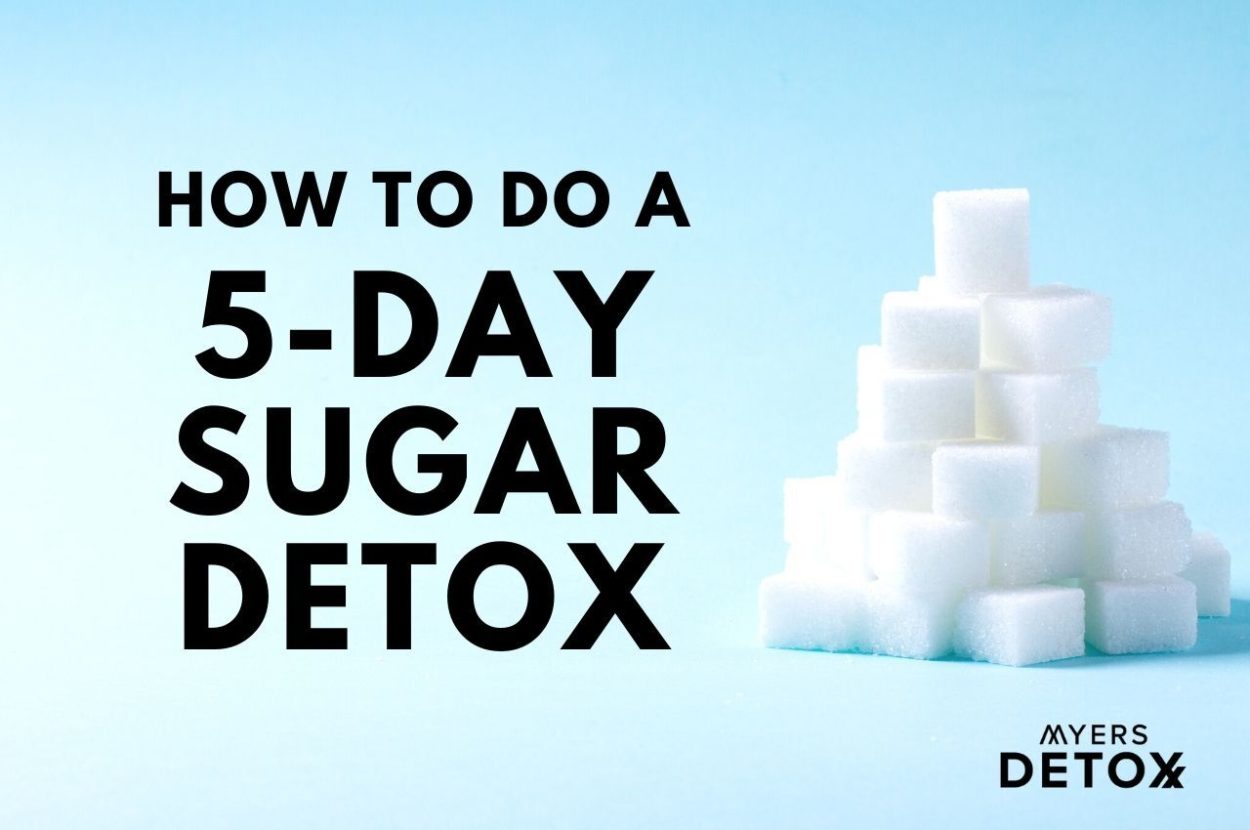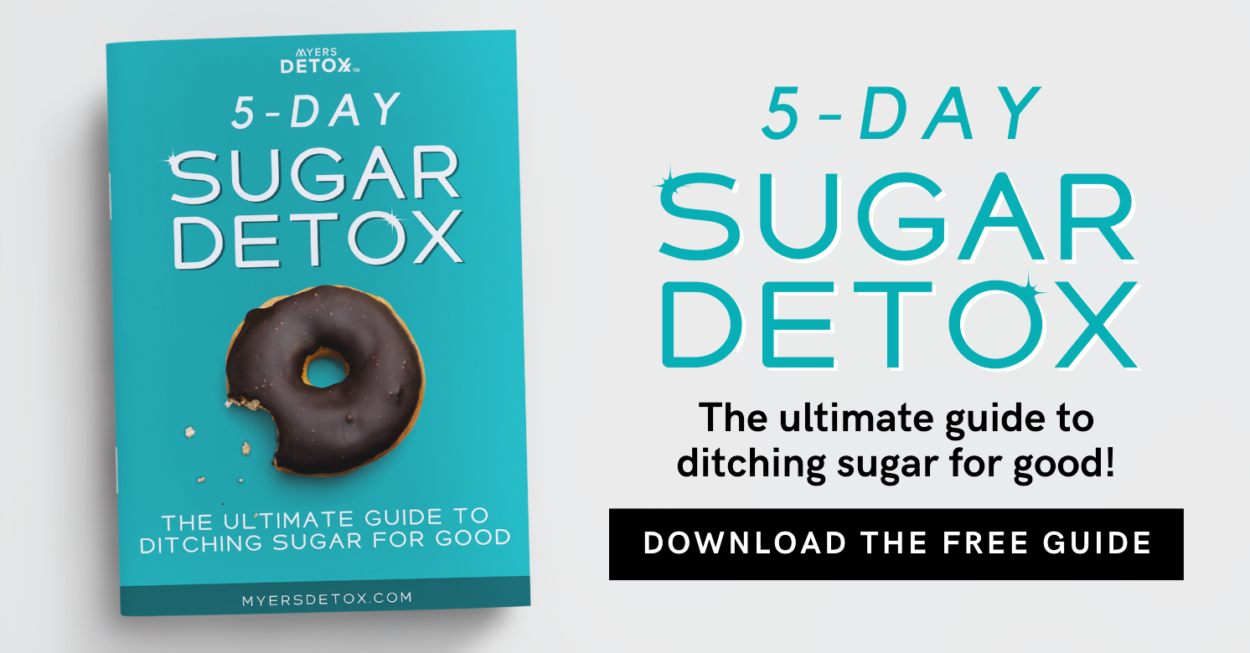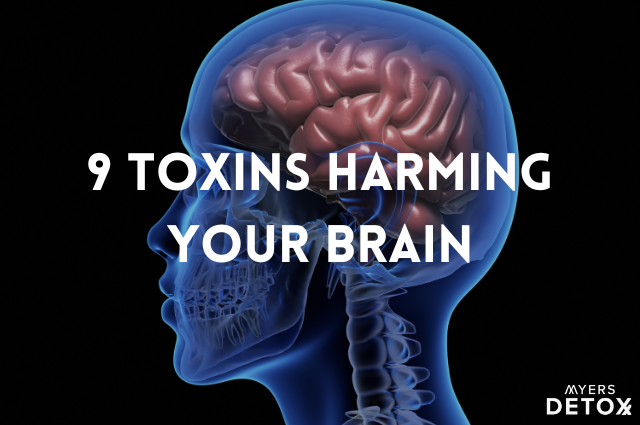Whether you realize it or not, sugar is everywhere in our food supply. Even if you actively avoid added sugars, food manufacturers sneak sugar into everything from sauces to nut butter to bread and more. It’s no wonder that the average American consumes more than 300% of the daily recommended intake of sugar[1].
In fact, many people’s palates have become so accustomed to the copious amounts of sugar in food products that they’re slightly desensitized to the taste of sweetness. This is why after a few days on a sugar detox, naturally sweet foods like fruit begin to taste like decadent treats.
But enjoying the sweetness of fruit isn’t the only reason to do a sugar detox, far from it.
Excess sugar can have a deleterious impact on almost every system in your body. What’s more, sugar can even become addictive — making it feel impossible to cut back on or avoid.
How can you fight the war with sugar?
In this article, you’ll learn:
- Why detoxing sugar is crucial for your health and longevity
- Some of the most harmful effects of sugar on your body
- How to go about detoxing sugar and what to expect
- Helpful tips for making your sugar detox painless
- A sample 5-day sugar detox meal plan
Why Do A Sugar Detox?
While naturally occurring sugar can be found in almost all foods, especially plant foods, added sugars have taken over the food landscape. Unlike natural sugars, added sugars are associated with a wide range of health detriments and are known to be at the root of some of the most prevalent diseases.
When sugar is a regular part of your diet, you may not even realize the harmful impact it’s having, which is the number one reason to give yourself a break with a sugar detox.
Due to its impact on your hormones, the imbalances that sugar creates can reach far and wide in your body. Let’s dive into more detail on how sugar impacts your hormones and several other systems in your body.
Sugar and Hormones
Perhaps the most well-known hormone associated with sugar consumption is insulin. When you consume dietary sugars (either simple or complex), insulin is stimulated from your pancreas to shuttle those sugar molecules into your cells to be used as energy.
In the case of complex carbohydrates like fruits, vegetables, and whole grains, the amount of sugar (or glucose) that enters your bloodstream will be manageable and, therefore, will initiate a moderate insulin response.
When you consume foods with simple sugars like cakes, candy, soda, and so on, it takes less time for your digestion to break down the sugar molecules. This is because they are already broken down– hence, “simple.” As a result, you get a flood of glucose into your bloodstream and a subsequent spike in both blood sugar and insulin.
In an effort to calm the sugar high that’s now running through your body, insulin must come in full-force. While this process is part of the checks and balances of your body, when it happens often, it can create issues with blood sugar control.
What’s more, since it’s insulin’s job to shuttle sugar into your cells, if you keep spiking your blood sugar, then insulin will keep storing those glucose molecules in your cells where they eventually turn into fat. This is why sugar consumption is so strongly associated with obesity[2][1].
Aside from insulin, sugar also has an impact on other hormonal systems in your body, especially your sex hormones.
In fact, research shows that eating too much simple sugar can turn off the genes that regulate active levels of testosterone and estrogen in your body. Testosterone and estrogen are crucial for all things having to do with your menstrual cycle, including fertility, pregnancy, regular menstruation, as well as menopause[3].
Sugar Addiction
Many people don’t realize that sugar is actually physically addicting. While on the one hand, this can be a relief to understand — it’s not just weak willpower that drives you to consume an entire box of cookies. On the other hand, it makes sugar and all those delicious products that contain it much more dangerous.
Research shows that sugar, and foods rich in sugar, can induce reward and craving chemicals in your brain on a similar magnitude as addictive drugs. In fact, in animal models, the response to sugar is even more robust than the response to cocaine[4].
This sheds light on why so many people crave sugar and sugary products and make it their go-to food for comfort in times of stress. But just like any other addiction, using sugar as your vice comes with some significant physical and emotional downsides. If you lean on sugar when you’re down long enough, your reliance on it will only grow — which makes taking a break from sugar all the more crucial.
Makes It Difficult To Lose Weight
The first thing that most people put on their “avoid” list when they’re trying to lose weight is sugar. If you’re trying to control your appetite and avoid overeating, sugar is public enemy number one.
It not only sends you on a blood sugar rollercoaster but as previously mentioned, your urges for it may become so strong that it feels more like an addiction than a craving (because it is).
Aside from the psychological role that sugar plays in weight gain, however, is the simple fact that excess sugar gets stored as fat.
Think of it this way; when you consume sugar, it’s hard to do so in moderation due to its addictive nature. Therefore, excess sugar ends up in your bloodstream. Now it’s insulin’s job to get that sugar out of your bloodstream. Where does it go? What isn’t used for immediate energy or stored goes right into your fat cells.
Therefore, sugar makes it difficult to lose weight not only because it’s hard to moderate, but any amount you consume in excess is a direct deposit into your fat stores[1].
Increased Risk For Chronic Diseases
What do heart disease, diabetes, metabolic syndrome, and chronic obesity all have in common? Inflammation.
These diseases, which are some of the leading causes of death in the U.S., all have roots in dietary and lifestyle behaviors, which lead to imbalances in the body[5].
Sugar consumption has been shown in research to be directly correlated with the inflammatory biomarker C-reactive protein[6]. As research in the area of disease and inflammation grows, a new concept called “the inflammatory model of disease” has been uncovered, which states that many of the chronic diseases we see today are marked by inflammation not only as a symptom but as part of the trigger[7].
So, where is all this inflammation coming from in the first place? Aside from acute inflammation due to injury, research shows that dietary patterns, and especially sugar consumption is associated with chronic inflammatory conditions like cardiovascular disease, type two diabetes, and metabolic syndrome, and autoimmune disease[8][9][10][11].
Mood and Energy
When you’re on a sugar rollercoaster and likely addicted to your sugar high, it can throw your energy for a loop. Due to the essential nature of nutrients in your bloodstream, when you mess with the perfect harmony of your body by adding in excess glucose, it’s not only your physiology that feels the effects — but your mind too.
Without sugar, you can expect more stable energy as your hormones are able to better manage incoming nutrients. Even more fascinating, research shows that depression and mood, in general, can be significantly impacted by sugar intake.
In one study, researchers gave a group of participants a diet that was high in sugar for 28-days and then switched them to a low-sugar diet for 28 days. They had the participants fill out a mood questionnaire after each arm of the study to determine the physiological impact of sugar. After the dietary intervention, the participants reported a significant increase in depression symptoms, fatigue, and general mood disturbance compared to the low-sugar diet[12].
How To Do A Sugar Detox
Remember, biology is stronger than willpower. It’s not your fault that you can’t resist those sugar cravings. You need to set yourself up for success. Here’s all the tips I’ve learned over the years to set up my body and environment for a sugar detox.
#1 Avoid Sugar Completely
Well, this may seem obvious. But it’s crucial for the first three days to avoid all forms of sugar — including fruit. Although fruit is generally healthy and okay, if you want to really kick your cravings for sweetness, it’s helpful to avoid the sweet taste altogether.
This gives your taste buds some time to desensitize to sugar. After three days of no sugar or fruit, you will be shocked at how sweet and satisfying an apple will taste.
You will also want to become aware of the different names that sugar can go by. Avoid all foods that contain:
- High fructose corn syrup (HFCS)
- Sucrose
- Fructose
- Agave
- Barley malt
- Brown rice syrup
- Cane sugar
- Beet sugar
- Coconut sugar
- Corn syrup
- Invert sugar
- Fruit juice (and fruit juice concentrate)
There are many more names, but an easier way to go about it is to just avoid packaged foods that you suspect may have added sugars. Look at the nutrition label, and if there are more than five grams of sugar per serving, you should probably move on.
Keep Your Blood Sugar Stable
Transitioning off of sugar can be a bit of a challenge if you’re dealing with cravings. To keep your blood sugar stable and combat those physical and emotional pulls for sugar, include lots of fat and protein in your diet.
Fat and protein have a minimal effect on your blood glucose. Therefore, they keep insulin under control while simultaneously increasing satiety — especially protein[13][14].
In addition to including fat and protein with each meal, be sure to have regular meals, so you don’t get low blood sugar. Even if you’re not a big breakfast person, try to have a little something to keep you steady.
Whole grains and vegetables are also excellent additions because they contain fiber and will help you feel full and satisfied.
Plan Your Meals Ahead
The best way to get ahead of missteps is to make a plan. There is a 5-day meal plan included in this post to make things easier for you — but you can mix and match and create your own as well.
If you have an hour or two the day before you start your cleanse, use that time to prep your meals a bit. The worst time to do meal-prep is when you’re already starving.
By having a well-defined plan, you can feel assured that food is under control so you can move on to more important things. And by having your refrigerator and cabinets stocked with low-sugar options, you don’t have to worry about what to do if and when those cravings hit.
Stay Hydrated
Staying hydrated is something you should think about on a daily basis, water is crucial to the overall health of your body.
When it comes to kicking sugar, however, hydration becomes even more vital. Many people mistake thirst for hunger, which can instigate cravings for food. Avoid this potential obstacle by drinking at least 8 glasses of water a day, and have a water bottle with you when you go out.
I drink Watt-ahh water because it’s the most hydrating water I’ve ever drank. You can find it on aquanew.com.
What To Expect
During the first few days of a sugar detox you may experience some unpleasant feelings. Some people feel more fatigued without sugar, or notice headaches or an inability to concentrate. You may also experience strong cravings for sugar during this time. You’re literally having withdrawals!
However, after the first few days (depending on your body), you can expect your energy to stabilize, any side effects like headaches to subside, and your cravings for sugar will be a thing of the past.
Some people notice these changes within a couple of days; for others, it can take up to a week or ten days. If you’re still struggling by day five, then extend your sugar detox a few more days so you can fully reap the rewards — it’s worth it!
Additional Tips For Detoxing Sugar
Look For Natural Sugar Alternatives
After your sugar detox, it’s a great idea to continue keeping your sugar intake to a minimum. This doesn’t mean that you have to say goodbye to sweet treats altogether, instead look for sugar substitutes like stevia and monk fruit. These two natural sweeteners not only provide a sweet taste, but they also support healthy blood sugar and are a source of antioxidants[15][16].
Avoid Chemical Sweeteners
While sweeteners like stevia and monk fruit are excellent sugar replacements, you’ll also want to be aware of other not-so-healthy sugar alternatives like artificial sweeteners. These ingredients may impart a sweet taste, but they’re typically made in a lab and are more chemical than food. Some examples to watch out for include aspartame, sucralose, and saccharin.
Prioritize Sleep
Getting a poor night’s sleep not only impacts your willpower and general energy, but it can increase sugar cravings[17]. During your sugar detox, be sure to prioritize getting enough sleep by committing to go to bed a bit earlier. You may also want to wind down with a book instead of watching TV or scrolling through your phone.
Manage Stress
Stress is one of the most common triggers for emotional eating, and from a biochemical perspective, it can instigate sugar cravings[18]. Learning how to manage your stress is a beneficial skill any time in life, especially when you’re challenging yourself with something new.
If you don’t already have a stress management go-to for yourself, you can use journaling, meditation, breathwork, or yoga.
5-Day Sugar Detox Meal Plan
| Day | Breakfast | Lunch | Snack | Dinner |
| 1 | 2 organic eggs scrambled with sauteed kale and sliced avocado | Buddha bowl (rice, beans, veggies, and hummus) | Handful of nuts (almonds, walnuts, macadamia) | Baked salmon with quinoa and a side of asparagus |
| 2 | Oatmeal with butter, salt, and cinnamon | Chicken and rice with stir-fry veggies | Celery with nut butter | Massaged kale salad with goat cheese, pumpkin seeds, and quinoa |
| 3 | Veggie frittata with mushrooms, onions, pepper, and tomatoes | Massaged kale salad with goat cheese, pumpkin seeds, and quinoa | Sliced carrots and cucumber with hummus | 100% grass-fed burger wrapped in lettuce with avocado and tomato |
| 4 | 2 organic eggs scrambled with sauteed kale and sliced avocado | Black bean and rice bowl with salsa and avocado | Cottage cheese with berries | Chicken and veggie stir-fry with brown rice |
| 5 | Oatmeal with butter, salt, cinnamon, and blueberries | Spring salad with fresh veggies and baked salmon | Apple with nut butter | Baked vegetables with chicken (brussels sprouts, asparagus, broccoli) |
Nutrients To Support Your Sugar Detox
The good news about detoxing sugar is that you don’t have to white knuckle it all the way. In fact, there are specific nutrients you can take that will support the detox process and help you get the most out of your efforts.
Blood Sugar Stabilizing
Supplements like bitter melon, gymnema, turmeric, and cinnamon are known for their ability to help balance your blood sugar. A common side effect of balanced blood sugar is a reduction in sugar cravings, which can assist your efforts[19][20][21][22].
Liver Supportive
Perhaps even more important than supporting blood sugar, however, is supporting your liver.
When you consume sugar, it puts a heavy tax on your liver, as this vital organ is responsible for coordinating how and when glucose is used in your body. When you consume excess sugar, it’s up to your liver to store it as fat, and this can lead to a condition known as non-alcoholic fatty liver disease(NAFLD)[23].
Herbs and foods that support your liver include broccoli sprouts, milk thistle, dandelion, burdock root, and schisandra berry[24][25][26][27].
I use Daily Detox every day to help maintain a healthy liver and healthy blood sugar regulation. It contains all of the nutrients mentioned above, including the most potent liver supporting nutrient – broccoli sprouts. Even better, the broccoli sprouts are fermented to makes their incredible level of nutrients more bioavailable.
While you detox sugar, your body may also respond by letting go of other toxins. Any toxins released by your body need to be dealt with by your liver, so liver support truly goes a long way when you’re cleansing.
Takeaway
Balancing my blood sugar is a main focus for me right now. My genetic propensity for diabetes has me on high alert to keep my blood sugar balanced. And I’m using every strategy in this article!
On another note, if your liver is dealing with sugar, it’s NOT dealing with toxins very effectively. It only has so much bandwidth. And I frankly feel that millions of people with a high sugar intake are more readily accumulating (but not eliminating) toxins because their organs of elimination are dealing with a 3 alarm fire – high blood sugar. Bad, high sugar diets are one of the reasons people are testing with higher levels of metals than ever before in history.
Doing a sugar detox once or twice a year is an excellent way to keep sugar addiction and cravings at bay. Even more important, however, is the profound impact that reducing sugar can have on your energy, metabolism, and overall health.
With the strong association between chronic disease, sugar, and inflammation, cutting back on your sugar intake may be the single most impactful thing you can do for your health. And improve your heavy metal detox results.
When taking part in a sugar detox, you don’t have to go it alone. It can be incredibly difficult to get past the sugar cravings for the first few days, so look to blood sugar, balancing nutrients to support you.
Giving your liver a little boost will also do wonders for you while detoxing sugar.
I use Daily Detox every day to help maintain a healthy liver. It’s my secret weapon in optimizing my liver and aiding a sugar detox. This formula not only contains blood-sugar regulating ingredients like cinnamon, fermented ginger and turmeric, but it’s packed with nutrients that support liver function as well.
Adding Daily Detox to your sugar detox takes the edge off while helping you get the most out of your detox. In my opinion, it’s the best way to supercharge any cleanse.










